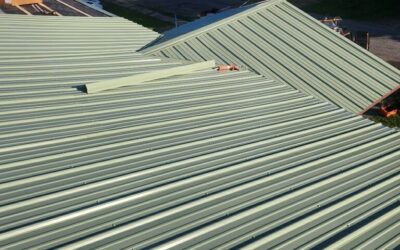Does a Roofer Do Siding? Here’s What Every Homeowner Needs to Know
If you’re researching exterior upgrades, you’ve probably asked: does a roofer do siding? Many homeowners assume roofing contractors offer siding services too—but that’s not always the case. Understanding the relationship between roofing and siding trades can help you make smarter hiring decisions, avoid unqualified contractors, and get both jobs done efficiently.
In this comprehensive guide, we’ll answer exactly that question, dive deep into potential overlaps, explore when you need separate specialists, and share expert tips from S&K Construction and Remodeling LLC—a trusted roofing and siding company based in Jefferson, Ohio, serving Ashtabula, Youngstown, Geneva, and all of Northeast Ohio.
Table of Contents
- 🏠 Does a Roofer Do Siding? The Short Answer
- What Defines a Roofer vs. a Siding Contractor
- Overlapping Skills: When Roofers Can Help with Siding
- Why Specialized Siding Contractors Exist
- Hiring a Dual-Qualified Roofing & Siding Contractor
- Benefits of One Company for Roof & Siding
- Signs You Need Separate Contractors
- Legal & Licensing Requirements in Ohio
- Cost Comparison: Combined vs. Separate Contractors
- Case Studies: Real Homeowner Projects
- Working with Insurance for Storm Damage
- Choosing the Right Contractor: Checklist & Questions
- Frequently Asked Questions
- Final Thoughts & Next Steps
1. 🏠 Does a Roofer Do Siding? The Short Answer
Yes—and no.
Some roofing contractors offer siding services, while others strictly handle roof replacements or repairs. The key is to verify licensing, experience, and insurance for siding work.
👉 If your roofer:
- Is licensed, insured, and experienced in siding installation,
- Offers a portfolio of siding projects, and
- Uses quality siding materials
Then yes, they can do siding professionally. If not, you’ll want a dedicated siding specialist.
2. What Defines a Roofer vs. a Siding Contractor
To understand why there’s overlap—and confusion—let’s define each role:
Roofer
- Specializes in roof systems: shingles, flashing, flashing ties into siding
- Trained for roof framing, sheathing, ventilation
- Focuses on waterproofing above the eaves
- Typically not trained in siding-specific tools (e.g., siding gun or panel install)
Siding Contractor
- Focuses on exterior cladding: vinyl, fiber cement, wood, engineered wood, composite
- Trained for flashing integration, trim, insulation, sealing
- Installs fascia, soffit, trim—often tying into roofing project
Many contractors today are dual-qualified—especially those like S&K Construction, where roofing and siding are core services. They invest in training their crews across both skill sets.
3. Overlapping Skills: When Roofers Can Help with Siding
There are areas where roofing and siding skills overlap, particularly along roofline transitions.
Flashing & Water Management
Roofers install the flashing at roof edges, walls, and dormers. They often shingle and flash up into siding—a crucial overlap! Properly done, it prevents leaks and hidden water entry. A roofer unfamiliar with proper siding flashing may:
- Leave gaps
- Use incorrect flashing angles
- Compromise vented siding joints
Fascia, Soffit, and Gutters
Many roofing companies install fascia, soffit, and wind-tight features. Though technically part of soffit/siding contractors’ work, a roofer trained in exterior finishing can cover those bases cleanly.
Roof-To-Wall Transitions
When roofing meets siding—like on dormers or bump-outs—competent roofing contractors can perform both operations. But only if they’re properly trained.
4. Why Specialized Siding Contractors Exist
Despite overlap, siding remains its own trade due to several key reasons:
- Unique materials: vinyl requires precise nailing; fiber-cement needs cutting tools and safety prep.
- Thermal expansion: siding panels expand/contract—they must be installed with precision.
- Trim and detailing: corner crews, window/door trimming, decorative architectural molding.
- Surface finishing: caulking, painting, sealing—elements outside moisture control focus of roofing work.
So, even if roofers can handle simple siding jobs, for high-precision installations, warranties, and curb appeal, a specialist is best.
5. Hiring a Dual-Qualified Roofing & Siding Contractor
Many reputable companies—like S&K Construction and Remodeling LLC—offer both roofing and siding under one service umbrella.
Benefits:
- Simplified scheduling: one crew, one timeline.
- Seamless integration: flashing, trim, color coordination.
- Bundled pricing: cost savings and package deals.
- Single warranty: easier to manage and longer coverage.
What to Look For:
Ask prospective contractors:
- “Do you have experience with vinyl, fiber cement, or wood siding?”
- “Can I see examples of completed siding projects?”
- “Is siding licensed under your roofing insurance?”
- “Do you offer combined roof‑and‑siding warranties?”
S&K Construction meets these criteria—they’re licensed and insured for both, have dozens of exterior remodels in Jefferson and Youngstown, and offer Owens Corning Preferred Contractor roofing systems plus premium siding options.
6. Benefits of One Company for Roof & Siding
1. Visual Cohesion
Your new roof and siding will align in color and style—boosting curb appeal and resale value.
2. Cost & Timeline Efficiency
Dual projects often reduce labor costs—especially for tear-off, flashing, and disposal.
3. Improved Home Protection
Complete exterior upgrades mean no step is skipped—your home gets a full weather-tight envelop.
4. Insurance Simplified
If you’re dealing with storm damage—you only file one claim, with one contractor managing roofing and siding replacements.
7. Signs You Need Separate Contractors
If your project requires specialty siding systems—like cedar shake, fiber cement with intricate trim, or real wood lap siding—you may prefer a siding expert. Similarly, if your roofing job involves complex waterproofing or unusual roofing materials (like slate or metal), a roofer focusing on only roofing might be best.
👉 Some scenarios call for separation:
- High-end fiber cement or custom siding detail
- Roof repair only—no siding involved
- Large scale siding overhaul without roof replacement
In those cases, ensure both contractors coordinate flashing, trim compatibility, and warranty coverage to avoid installation errors.
8. Legal & Licensing Requirements in Ohio
In Ohio, regulations vary by county. Most require registration if contracting projects over $2,000–$5,000.
Important checks:
- General contractor license & residential contractor registration for both trades.
- Proof of workers’ comp and liability insurance.
- Local municipality permits—especially for structural changes, demolition, or siding types (like EIFS).
Choose contractors who handle permitting themselves—S&K does. They ensure proper building department approvals in Ashtabula, Jefferson, Youngstown, and nearby jurisdictions.
9. Cost Comparison: Combined vs. Separate Contractors
Scenario Example:
- 2,000 sq ft single-family
- Asphalt roof & vinyl siding
Option A: Separate Contractors
- Roofer: $10,000
- Siding Contractor: $12,000
- Total: $22,000
- Coordination time/bid process: 2–3 weeks
- Risk of installation overlap and miscommunication
Option B: One Dual-Qualified Contractor
- Bundled Price: $20,000
- Combined scheduling: 1–2 weeks
- Included flashings, disposal, warranty
Typical Savings from bundling: $1,500–$3,000, plus:
- One point of contact
- Single warranty
- Faster job completion
10. Case Studies: Real Homeowner Projects
Case Study 1: Jefferson Ranch Home
Challenge: Asphalt shingles nearing 30 years, faded vinyl siding, water infiltration at dormer edges.
Solution: S&K performed a full roof and siding replacement. They removed existing siding, replaced roof decking and Duration shingles, and reinstalled new vinyl siding with flashings over roof termini.
Outcome:
- Water infiltration issue resolved.
- Loaned a thermal camera during estimate to inspect under shingles.
- Home’s value increased by $15K.
- Bundle pricing saved the homeowner $2,000—ROI was significant.
Case Study 2: Youngstown Craftsman Revamp
Challenge: Original cedar shake (unpainted) aging, leaking roof around soffits.
Solution:
- New Owens Corning architectural shingles,
- Fiber-cement siding,
- Trim and water-managed soffit system
Outcome:
- Dramatic curb appeal improvement.
- Energy bill dropped 12% thanks to added insulation under new siding.
- Insurance covered roof damage; siding installed out-of-pocket—quotes coordinated seamlessly.
11. Working with Insurance for Storm Damage
Storms are common in Northeast Ohio, and insurance can cover both roofing and siding—if the contractor:
- Helps document damage (photos, assessments)
- Provides detailed estimates
- Coordinates roofing and siding parts of the claim
- Works with adjusters
A dual-role contractor can streamline this—S&K has extensive experience working with Ohio insurance companies, saving homeowners from duplicate adjuster visits or denied partial coverage.
12. Choosing the Right Contractor: Checklist & Questions
Use this checklist when vetting potential contractors:
✅ License and insurance for both trades
✅ Portfolio with real roofing + siding jobs
✅ Local references in Jefferson, Ashtabula, Youngstown
✅ Written warranties (materials + workmanship)
✅ Formal quotes showing tear-off, flashings, disposal
✅ Permitting services included
✅ Familiarity with insurance claims
✅ Experienced in both vinyl and harder siding types
Recommended questions to ask:
- “Do you handle siding in‑house or subcontract?”
- “Can you walk me through flashings for roof/siding integration?”
- “Are roofing and siding covered under a single warranty?”
- “Can I choose my siding and shingle colors to match?”
- “Proof of license, insurance, and recent references?”
13. Frequently Asked Questions (FAQs)
Q1: Can a roofer install vinyl siding?
Yes—if they’re trained and licensed. Confirm they can demonstrate experience and hold proper insurance.
Q2: Do roofers replace soffit and fascia?
Often yes—but this is technically siding/exterior finish work. Always verify their scope.
Q3: What about fiber cement siding?
Fiber cement (e.g. Hardie Board) requires power tools and dust control. Ask whether the roofer’s crew is equipped and trained.
Q4: Do they coordinate with gutter installers?
Top-quality companies manage fascia, gutter, and downspout systems all under one service.
Q5: Which job should go first—roof or siding?
For a full exterior, roof typically goes first. Then siding overlaps step flashing properly. Combined contractors manage the sequence.
Q6: What if I have existing siding and only need a roof?
You can hire a roofing-only specialist. Just ensure siding flashings are properly protected during work.
14. Final Thoughts & Next Steps
So—does a roofer do siding? Sometimes… but only when properly trained, licensed, and equipped. Otherwise, you may risk subpar installation, water leaks, or invalidated warranties.
For most homeowners, the best choice is to hire a dedicated roofing and siding contractor—someone who knows both trades intimately, coordinates flashing and trim, and can offer bundled warranties. That’s where S&K Construction and Remodeling LLC, serving Jefferson, Ashtabula County, Youngstown, and across Northeast Ohio, stands out. They deliver quality, convenience, and cost efficiency for exterior remodels.
Next Steps:
- Schedule a no‑cost inspection with a professional roofing & siding contractor.
- Ask specifically about their experience on both trades.
- Compare bundled vs. separate quotes.
- Discuss warranty, installation timeline, and project scope.
- Choose a contractor who offers transparent pricing, scheduling, and top-tier workmanship.
When you align your roofing and siding needs with a trusted, dual-trained contractor, you’ll enjoy a beautiful, weather-tight home—without surprises.
 (440) 307-2060
(440) 307-2060


